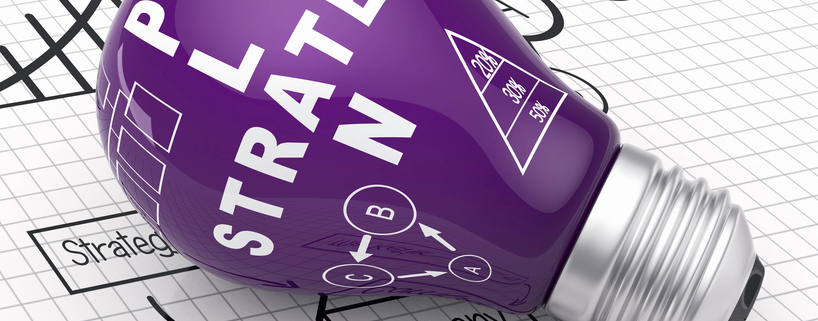5 Ways to Innovate a Supply Chain Business
Every supply chain business must innovate in order to keep customers interested and add new customers to the fold. Here are five ways distributors and manufacturers can innovate and improve in order to grow.
Innovation Helps Manufacturers and Distributors Grow
Companies that fail to innovate can quickly become obsolete, and that applies to supply chain organizations, too. But introducing new products is not the only way to get the attention of customers and grow. Rather than simply waiting for growth to occur as a natural outcome of an improving economy, supply chain manufacturers and distributors should actively look for ways to innovate if they want to grow more quickly.
5 Ways Manufacturers and Distributors Can Innovate to Grow a Supply Chain Business More Quickly
Introduce product innovations and evolutions
Manufacturers that are committed to internal continuous improvement are far more likely to be able to introduce new products more often as well as upgrades and improvements that lead to additional sales. Likewise, distributors that source upgraded or improved options for their customers will have more opportunities to resell to existing customers and bring new accounts on board.
Innovate the account management process
Like consumers, more and more B2B buyers expect to be able to reach out to a knowledgeable sales or account professional online, day or night, even outside of a company’s regular hours of operation. These same buyers also expect that supply chain organizations will facilitate the means for them to order online, track shipments and progress, set up automatic re-ordering, pay invoices and otherwise manage their accounts online, without ever speaking to a company representative if that is their preference.
Introducing account management innovations today’s customers have come to rely on can mean the difference in landing new accounts and generating additional sales as well as creating customer dependencies that make it less likely they will shop around or defect.
Innovate manufacturer and distributor delivery methods
Perhaps more so than any other distributor, supply chain giant Walmart has modeled the pursuit of constant innovations when it comes to manufacturer and distributor delivery methods. Like consumers, B2B buyers are coming to expect shipping costs to be included in pricing up front and for that delivery to occur quickly.
While you may not be in a position to scramble an army of drones or facilitate same-day or next-day delivery, anything you can do to cut costs and decrease time customers spend waiting for their orders can help you compete.
Innovate your marketing approach
What words would you use to describe your marketing copy and channels? When it comes to marketing, there is no reason your marketing cannot be innovative, engaging, entertaining and intriguing – even – and especially – if your products aren’t. Innovating your marketing approach through:
- publicity stunts
- social and cultural influencers
- social media and press mentions
- wins in ‘best of’ contests
- revitalizing your brand’s visual image and taglines
- telling customers about your brand’s values and corporate social responsibility programs
– are all examples of ways to infuse new life into your marketing.
Ensuring that your brand is ‘alive and well’ in digital media channels (email marketing, social media, blogging, etc.) will better help you reach the new generations of Millennial and Gen-Z B2B buyers that are replacing retiring Baby Boomers.
As a supply chain business, you can also help create demand from your buyers by stimulating demand directly among their customers. We recently published an article that describes four ways distributors and manufacturers can generate demand by marketing to consumers and end-users, rather than simply marketing to their own buyers.
Innovate the company culture
“It is what it is,” is a phrase that is often uttered along with a shrug of the shoulders, indicating a fait accompli; or, in other words, a thing that has already happened or been decided before those affected hear about it, leaving them with no option but to accept. In some ways, company culture is “what it is,” in that it cannot be faked. But just because it cannot be faked, does not mean that it cannot be improved.
Innovations and investments made to improve your corporate culture, when genuine, will often produce impacts far greater than improving employee satisfaction. They can improve hiring outcomes, reduce employee turnover, and increase employee engagement, all of which have a direct impact on improving sales and decreasing costs. Marks for customer satisfaction, loyalty and referrals are also much higher for brands that are known for their innovative corporate cultures.
Innovating within your manufacturing or distribution company may allow you to serve new customers, but that’s not all.
Innovations also send a clear message to existing customers that your business is committed to making continual improvements for the future. It creates a spirit of intrigue among your customers about what might be coming next. They will be more likely to see your supply chain business as a valuable partner in the supply chain, and as a result, offer you additional suggestions that can help you innovate more effectively and quickly.
Taking proactive steps to innovate can even put you in the driver’s seat when it comes to change. As a manufacturer or distributor, leading the way by innovating puts you in the position of being a leader, rather than a supply chain business that must scramble to keep up with the companies that are driving change in the industry. As Steve Jobs so wisely said, “Innovation distinguishes between a leader and a follower.”


